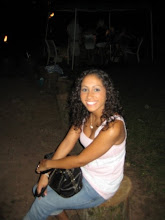Sociocultural and Linguistic differences in room 308 at Mitchell Elementary School are undoubtedly prevalent. With the variety of cultures of the different children in Mrs. Kelly's classroom, it is impossible to ignore. Mrs. Kelly, the Special Education teachers, and myself have communicated in ways that demonstrated sensitivity towards these differences.
In Mrs. Kelly's classroom, there is a large majority that speak English as a second language. Many of these children is of the Hispanic descent, so Spanish is what most of them speak in their home. This comes in handy because one of the Special Education teachers happens to speak Spanish fluently. Whenever there is linguistic problems with any of the children who speak Spanish, Ms. Carter helps them out. Mrs. Kelly and I will try the best that we can with helping them try to make sense of what they are working on, but if it gets to the point where Ms. Carter has to speak to them in Spanish, she will.
Besides having students who are learning English as a second language, we have one student who is not partially deaf, but is also bilingual with Spanish and English. Bobby* has to wear a hearing aid at all times, while Mrs. Kelly has to wear the microphone set so that he can hear everything she says. If he still is unable to hear things, Ms. Carter will use the microphone and talk to him in Spanish, this ensures that he can hear and understand the lesson that is being taught. This could be problematic considering one would think that he couldn't hear his classmates talk and learn from them or that he wouldn't be able to hear Ms. Carter or myself when we speak to him. On the contrary, the students that are in this class stay in this class all day long together. They are used to Bobby and his hearing handicap. They have worked it out with him that Bobby needs to be able to very clearly read their lips. With the combination of Bobby being able to read people's lips and slightly hear what they are saying, he is able make sense of what is going on around him. Also, when we have to split up into small reading groups, whomever is the teacher for that group, which is usually Ms. Carter, will wear the microphone. This helps ensure that Bobby is understanding what is happening in the classroom and help him to talk with his classmates.
The theorist that I thought related most to this experience was Claude Goldenburg with his article, "Teaching English Language Learners". In this article, Goldenburg discusses misconceptions, facts, and research conducted about the average child whose first language is not English. In the article, is says that it isn't as hard as one may think it is to learn English in their native language. They use the method of "transferring" which allows them to use some of their native terms to help them figure out what a word means in English. I was astonished at this because I have never thought of that before. And when I think about it I now recall one little girl, Rosa*, speaking to herself in Spanish while Mrs.Kelly was trying to teach a vocabulary lesson. This was way to learning was extremely helpful for her and will be very helpful for the other bilingual students as well.
Wednesday, December 9, 2009
Subscribe to:
Post Comments (Atom)

What you have experienced working in that classroom really shows the linguistic and sociocultural differences that occur in classrooms. The fact that both the teachers and students all work together to ensure that everyone knows what is going on in the class. The special attention that is given to Bobby due to his disabilities is something that really standsout.
ReplyDelete